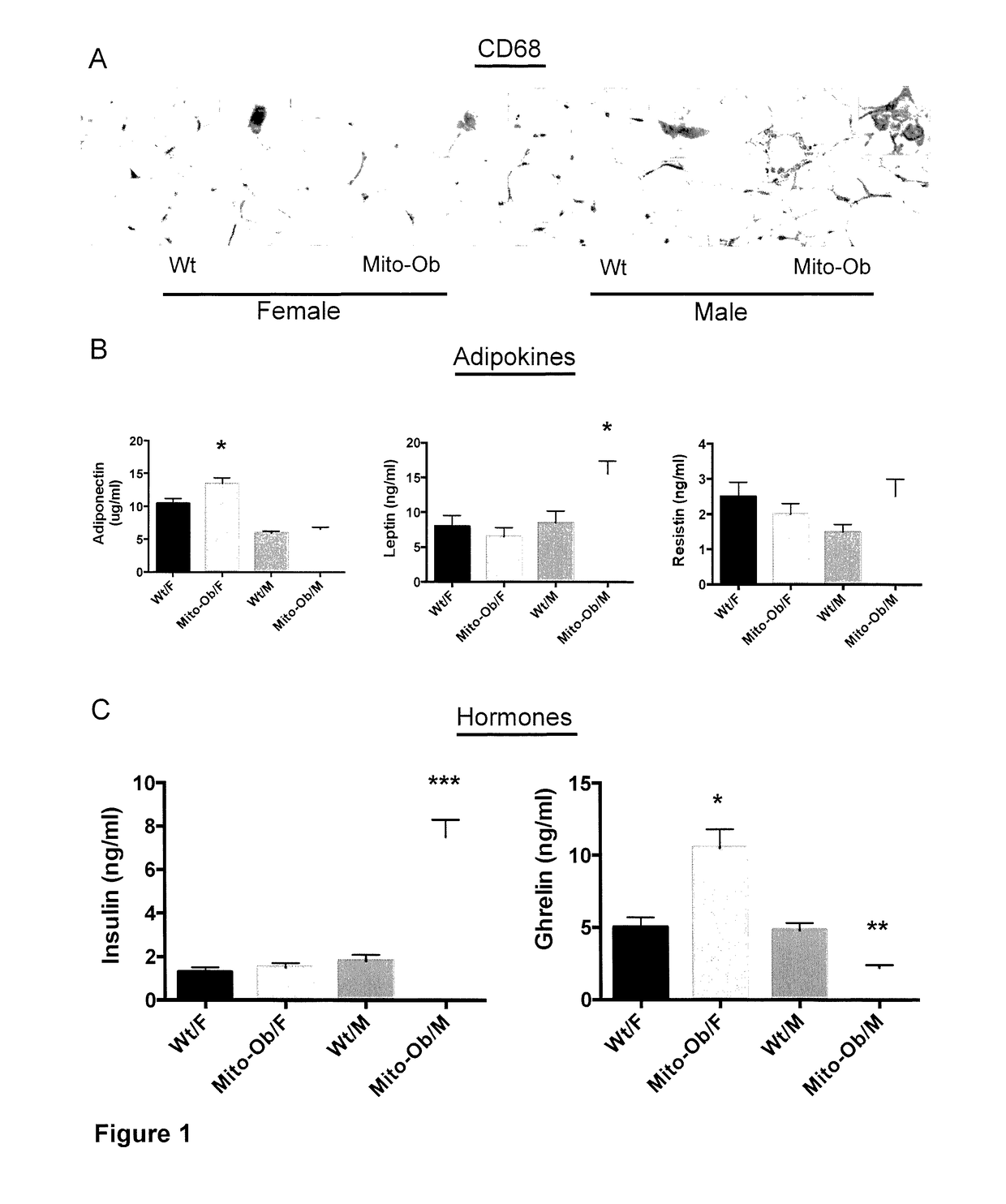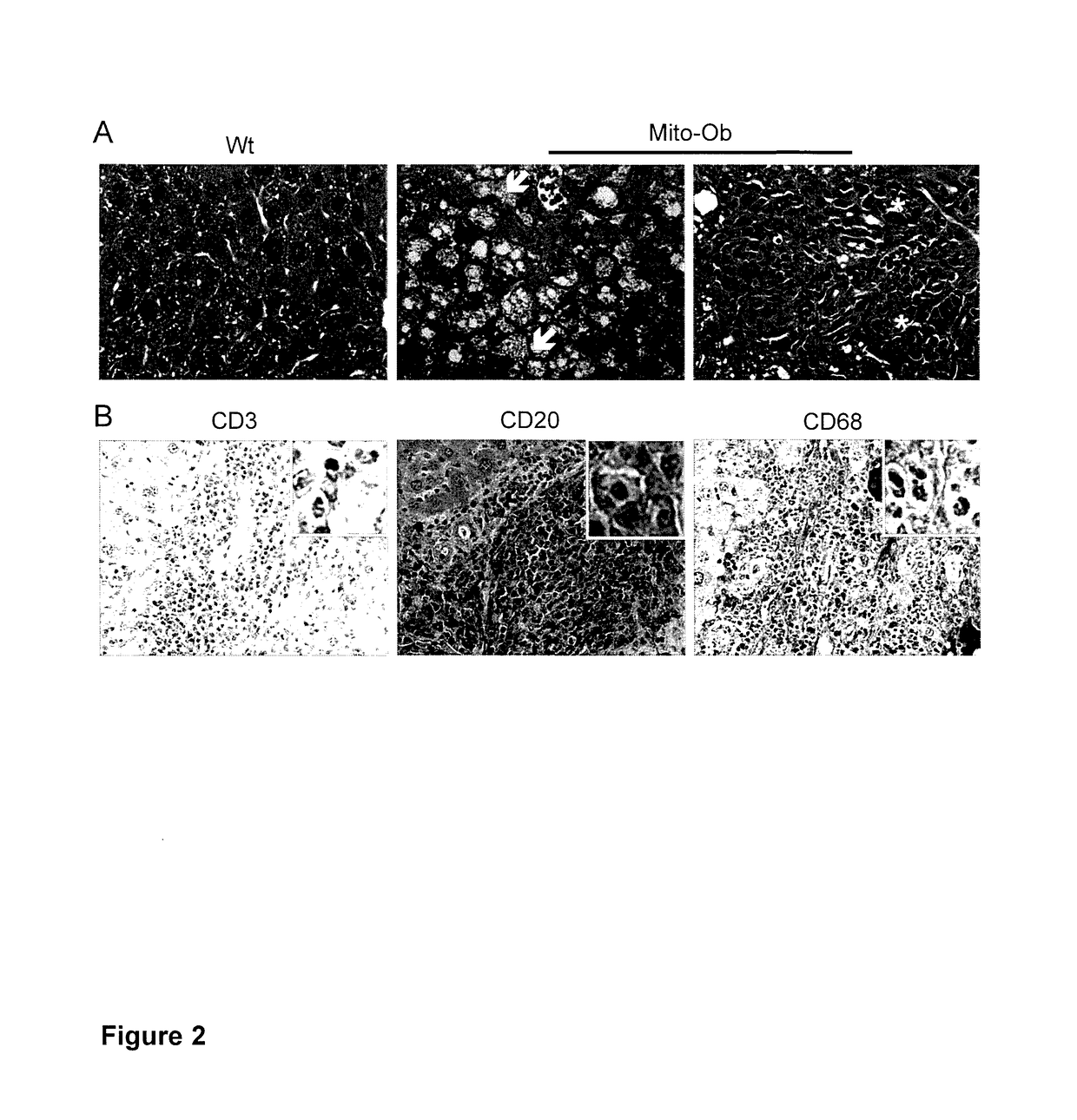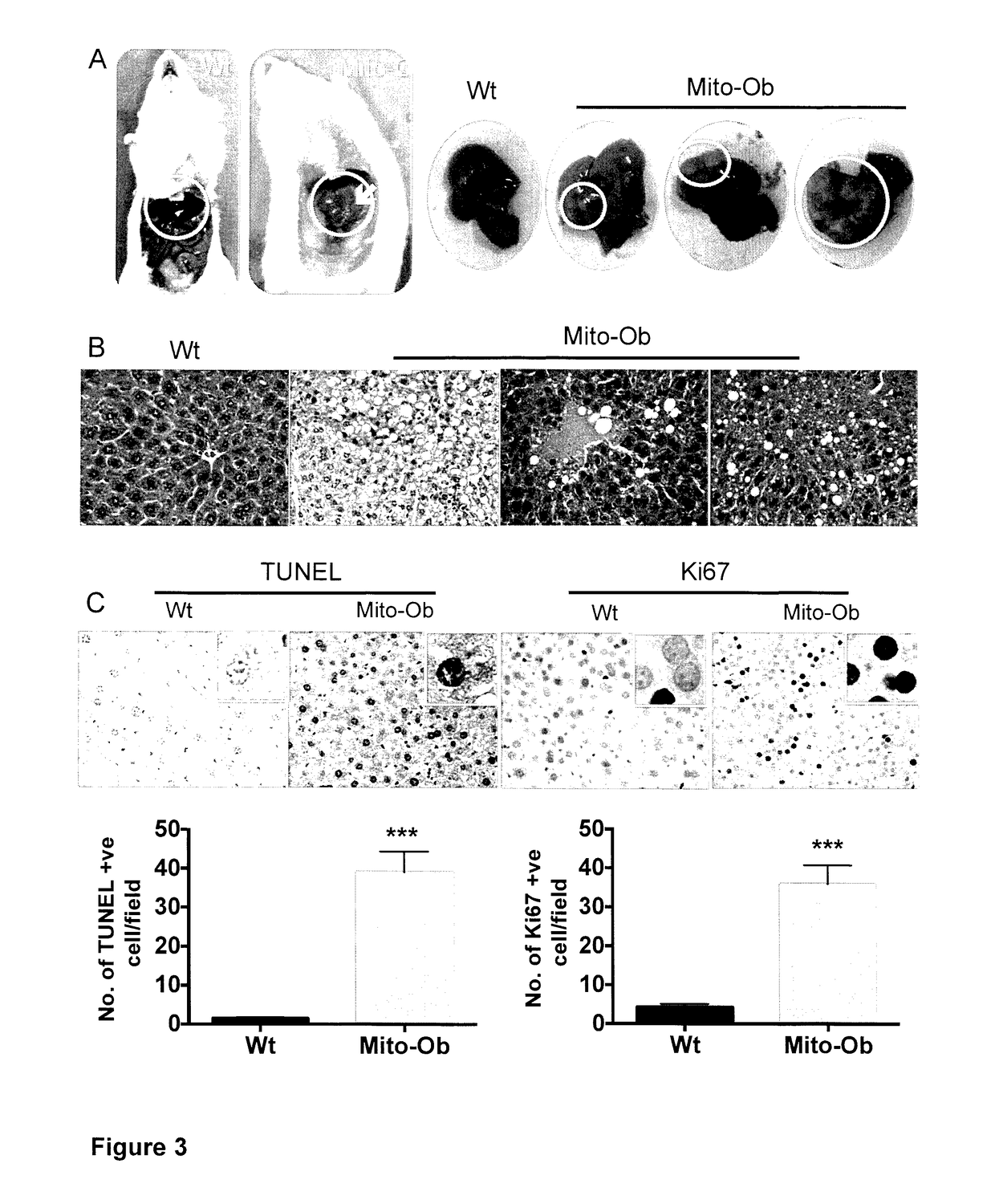Uses of mito-ob transgenic mice
a technology of mitoob and transgenic mice, which is applied in the field of use of mitoob transgenic mice, can solve the problems of increased risk of recurrence, lack of suitable animal models, and increased mortality, so as to reduce the severity of hepatocellular carcinoma, reduce the number of tumors and/or tumors, and delay the onset of hepatocellular carcinoma
- Summary
- Abstract
- Description
- Claims
- Application Information
AI Technical Summary
Benefits of technology
Problems solved by technology
Method used
Image
Examples
Embodiment Construction
[0042]Unless defined otherwise, all technical and scientific terms used herein have the same meaning as commonly understood by one of ordinary skill in the art to which the invention belongs. Although any methods and materials similar or equivalent to those described herein can be used in the practice or testing of the present invention, the preferred methods and materials are now described. All publications mentioned hereunder are incorporated herein by reference.
[0043]Published US Patent Application US 2015 / 0026833 teaches a transgenic mouse designated as Mito-Ob. Specifically, as discussed therein, the inventors developed an obese mouse model by overexpressing the mitochondrial protein prohibitin (PHB) in white adipose tissue (WAT) specific manner driven by adipocyte protein 2 (aP2) promoter. The inventors have named these mice “Mito-Ob” because they begin to develop obesity as a result of mitochondrial remodeling (upregulation of mitochondrial biogenesis and function) in WAT, th...
PUM
| Property | Measurement | Unit |
|---|---|---|
| Time | aaaaa | aaaaa |
| Fraction | aaaaa | aaaaa |
| Fraction | aaaaa | aaaaa |
Abstract
Description
Claims
Application Information
 Login to View More
Login to View More - R&D
- Intellectual Property
- Life Sciences
- Materials
- Tech Scout
- Unparalleled Data Quality
- Higher Quality Content
- 60% Fewer Hallucinations
Browse by: Latest US Patents, China's latest patents, Technical Efficacy Thesaurus, Application Domain, Technology Topic, Popular Technical Reports.
© 2025 PatSnap. All rights reserved.Legal|Privacy policy|Modern Slavery Act Transparency Statement|Sitemap|About US| Contact US: help@patsnap.com



